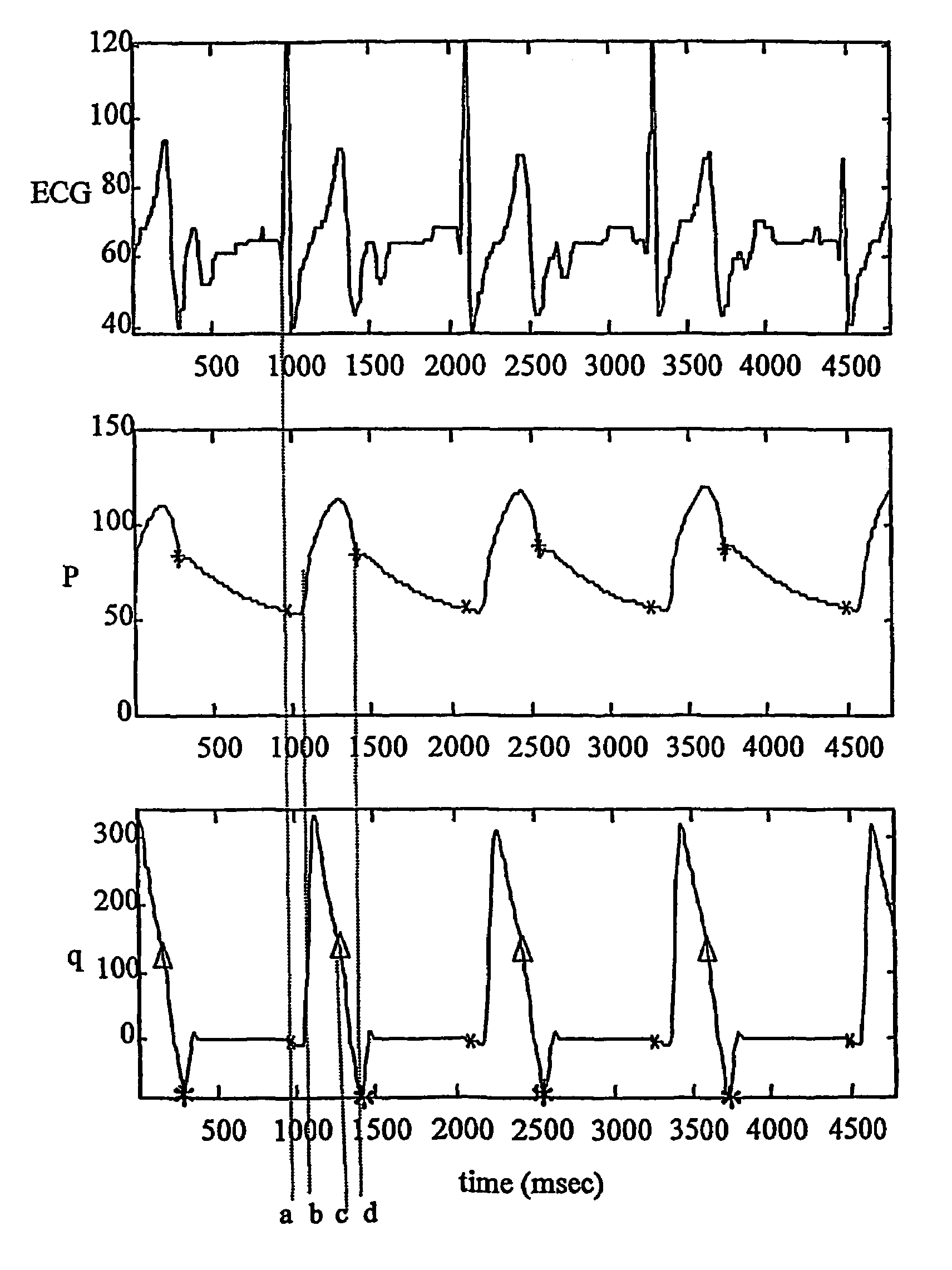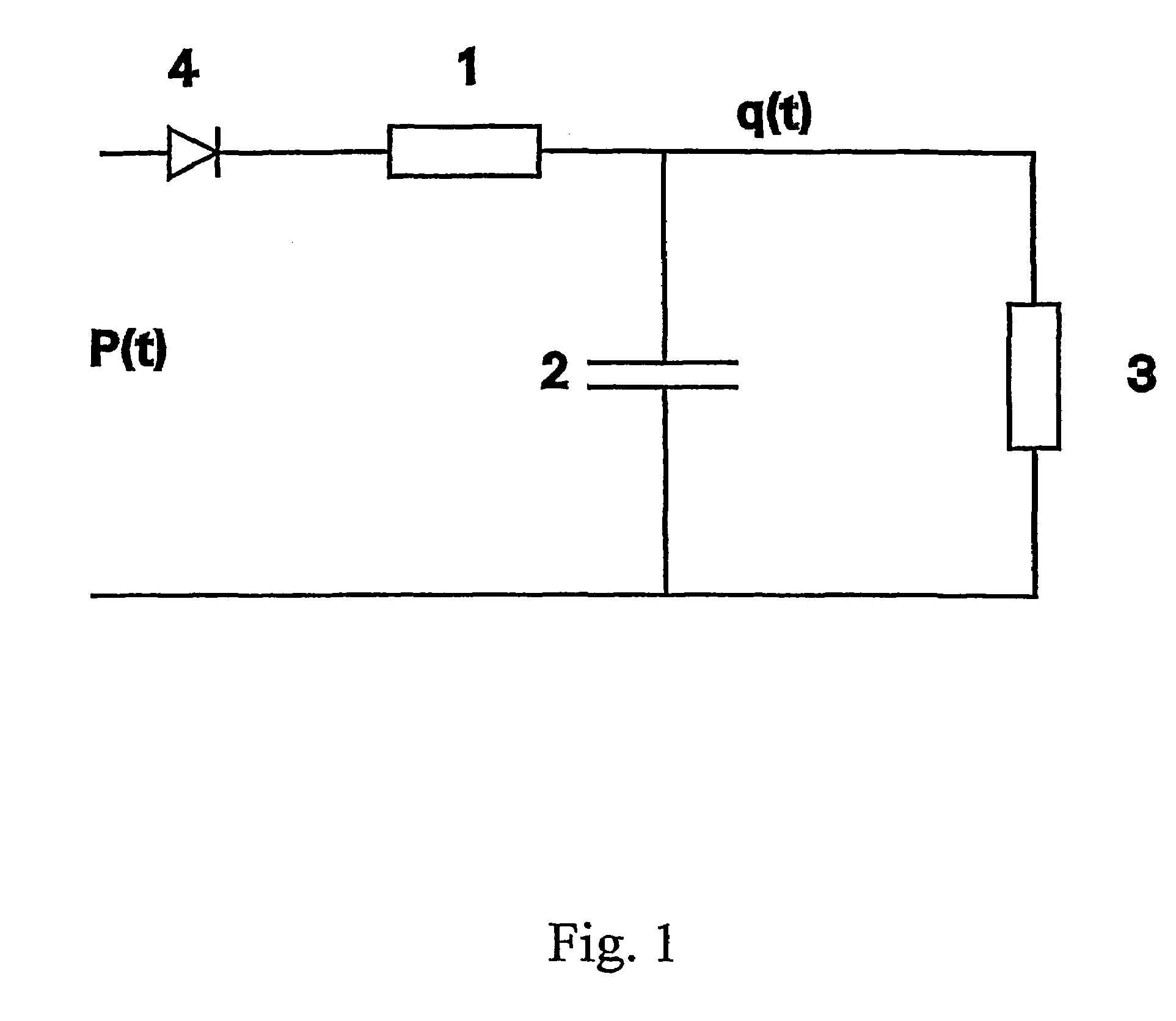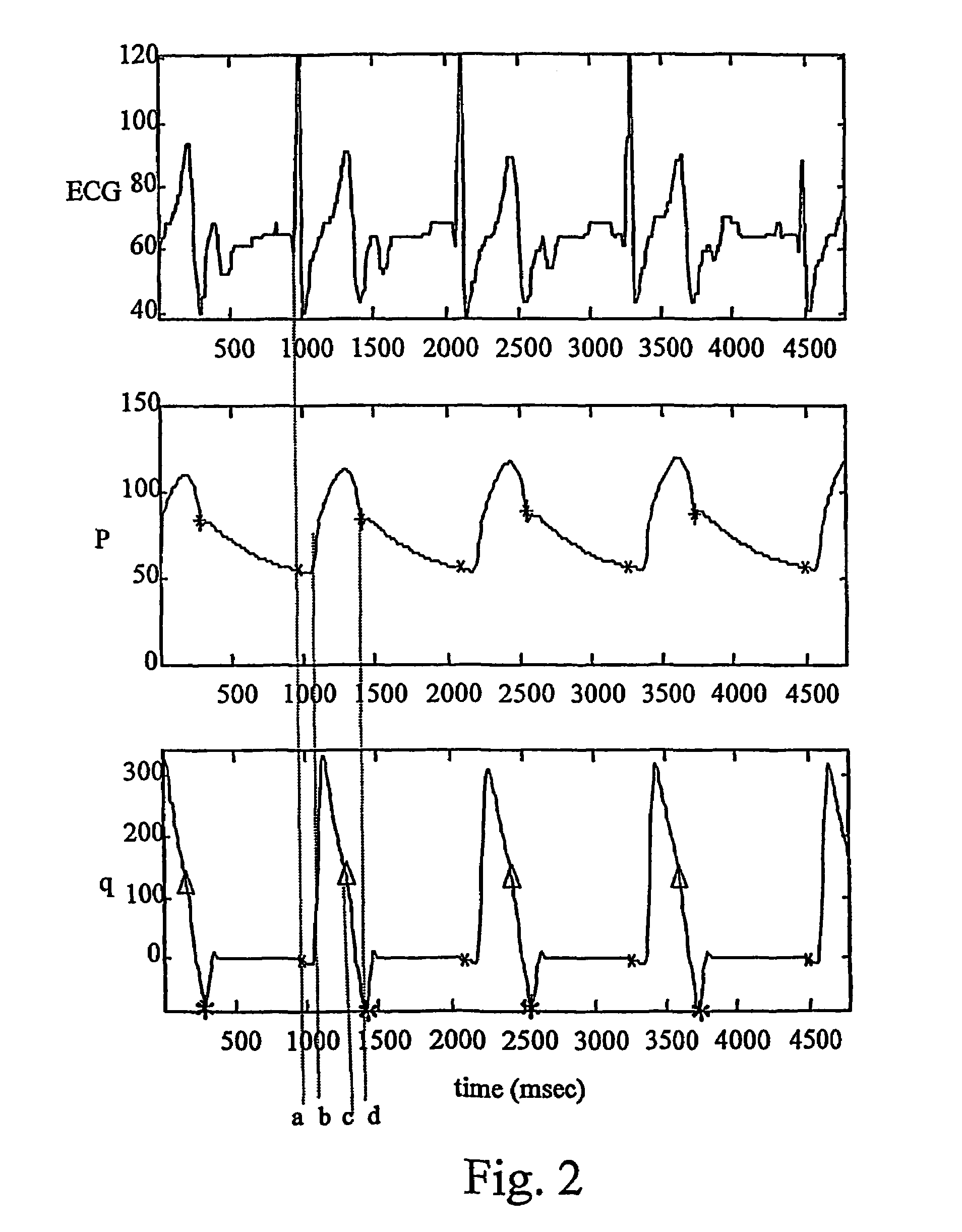Methods and apparatus for controlling heart assist devices
- Summary
- Abstract
- Description
- Claims
- Application Information
AI Technical Summary
Benefits of technology
Problems solved by technology
Method used
Image
Examples
Embodiment Construction
[0020]Before describing the invention in detail, it is useful to describe the principles of the invention first with reference to FIGS. 1, 2, 3.
[0021]FIG. 1 shows a Windkessel model which is an equivalent circuit diagram of the heart valve and the arterial vascular system describing the load on the heart. The model comprises the following elements: a characteristic input resistance, Rao, 1; an arterial compliance, Cw, 2; a peripheral resistance, Rp, 3; and a heart valve, D, 4, which closes after the blood flow rate in the cardiac cycle becomes negative. On the basis of this model, a mathematical equation can be written, which gives the relation between the arterial pressure signal, P(t) and the blood flow rate, q(t):
(1+Rao / Rp).q(t)+Rao.Cw.q′(t)=P(t) / Rp+Cw.P′(t)
wherein q′ (t) and P′ (t) are the first-order derivatives in time of q(t) and P(t).
[0022]The value q(t) that is computed by means of this equation is undelayed in time. The closing time of the heart valve can be accurately de...
PUM
 Login to View More
Login to View More Abstract
Description
Claims
Application Information
 Login to View More
Login to View More - R&D
- Intellectual Property
- Life Sciences
- Materials
- Tech Scout
- Unparalleled Data Quality
- Higher Quality Content
- 60% Fewer Hallucinations
Browse by: Latest US Patents, China's latest patents, Technical Efficacy Thesaurus, Application Domain, Technology Topic, Popular Technical Reports.
© 2025 PatSnap. All rights reserved.Legal|Privacy policy|Modern Slavery Act Transparency Statement|Sitemap|About US| Contact US: help@patsnap.com



